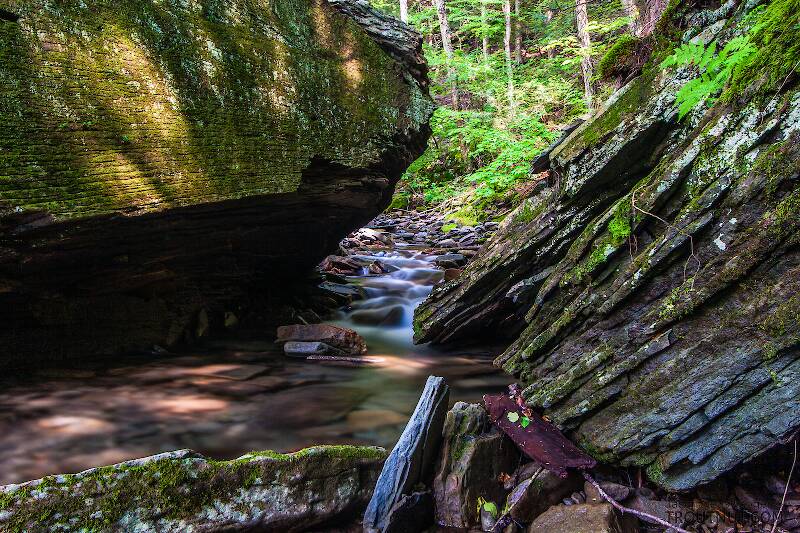
Blue-winged Olives
Baetis
Tiny Baetis mayflies are perhaps the most commonly encountered and imitated by anglers on all American trout streams due to their great abundance, widespread distribution, and trout-friendly emergence habits.
Featured on the forum

I was not fishing, but happened to be at an unrelated social event on a hill above this tiny creek (which I never even saw) when this stonefly flew by me. I assume it came from there. Some key characteristics are tricky to follow, but process of elimination ultimately led me to Sweltsa borealis. It is reassuringly similar to this specimen posted by Bob Newell years ago. It is also so strikingly similar to this nymph from the same river system that I'm comfortable identifying that nymph from this adult. I was especially pleased with the closeup photo of four mites parasitizing this one.

Troutnut is a project started in 2003 by salmonid ecologist Jason "Troutnut" Neuswanger to help anglers and
fly tyers unabashedly embrace the entomological side of the sport. Learn more about Troutnut or
support the project for an enhanced experience here.
Caddisfly Species Lype diversa (Dark Eastern Woodland Sedges)
Where & when
This species is common in the Midwest and present throughout the East.In 91 records from GBIF, adults of this species have mostly been collected during June (33%), May (22%), July (20%), and August (12%).
In 59 records from GBIF, this species has been collected at elevations ranging from 39 to 5103 ft, with an average (median) of 1881 ft.
Species Range
Egg-Laying behavior
Time of day: Afternoon or evening
Larva & pupa biology
Gary LaFontaine describes the unusual shelters built by these larvae in Caddisflies:The larva builds a retreat, or dwelling tube, by raising a simple roof or a groove in a sunken piece of wood. The tube is camouflaged with pieces of detritus and a layer of silk.
Start a Discussion of Lype diversa
References
- LaFontaine, Gary. 1981. Caddisflies. The Lyons Press.
- Swisher, Doug and Carl Richards. 2000. Selective Trout. The Lyons Press.
Caddisfly Species Lype diversa (Dark Eastern Woodland Sedges)
Species Range
Common Name
Resources
- NatureServe
- Integrated Taxonomic Information System
- Global Biodiversity Information Facility
- Described by Banks (1914)

